MODELING
Service Blueprints/flow-charts
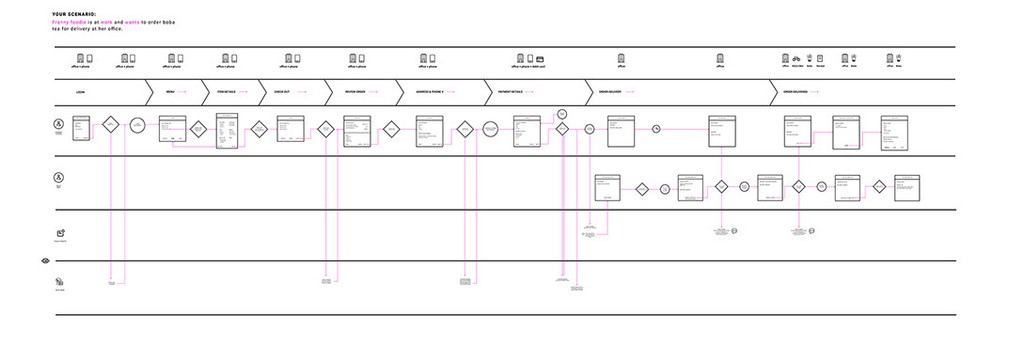
These are large diagrams that effectively convey complex journeys, encompassing physical activities, digital interactions, notifications, screen-based touch-points, and systems. They capture the experiences of multiple users or personas over extended periods, such as days, weeks, or even months within one physical artifact.
Examples:
• Modeling the entire voting experience
• The life cycle of a facebook message (notifications, emails, shares, likes, comments)
• The a multiple rider (ride share) Uber ride experience.
When to use
Model the current problem state during the discovery phase to understand the existing issues (model the problem).
Model the solution state before the design phase, typically done after developing concepts, when you want to explore the workflow in detail (model the solution).
Why to use
The visual diagram is valuable for clearly communicating complex interactions within any scenario, making it easier for your team, clients, and stakeholders to understand.
Encompasses multiple mediums of interaction beyond just software
(e.g., email → website → ordering → delivery → in-person interaction → reviews).Excellent for illustrating how a system or experience functions across multiple personas.
Captures processes that extend over hours, days, weeks, or even months.
Ideal for modeling experiences that incorporate IoT devices and connect to application workflows.
Why this is one for the most valuable tools to have within the design tool-kit:
At the beginning, if you have a domain expert, or toward the end of your research when you have enough knowledge about the user and their problem, you can use this approach to visually convey the problem you intend to address.
This tool will force you to understand the workflow from a modeling perspective from end-to-end—allowing you to outline the process without needing layouts, photos, buttons, transitions, or other design elements.
By requiring you to figure out all the content from start to finish, this tool helps expose gaps in your understanding. These areas are where you can seek help from teammates, stakeholders, or subject matter experts—again before you start designing.
This tool also enables collaboration with non-designers. You and the project manager can work together to create this, using a whiteboard for brainstorming, and then digitize the whiteboard content afterward.
You can also share this model with engineers to gather feedback on the system before you begin designing screens. The advantage is that engineers can start working directly from the model. They can create low-fidelity screens (basic text buttons, forms), build out the databases, and explore services like payment (e.g., Stripe) and document signing (e.g., DocuSign). Once you have the designs ready, they can come back repurpose the application to match your designs, system, and styles. Essentially, this buys you more time to focus on design and testing.
Most importantly, during a design interviews, this is the top tool we at Pivotal Labs looked for when conducting an on-site design whiteboard challenge. We prompt a two-person interaction to assess whether the design interviewee can effectively model a workflow that involves a two or more person interaction, including notifications and touch-points.
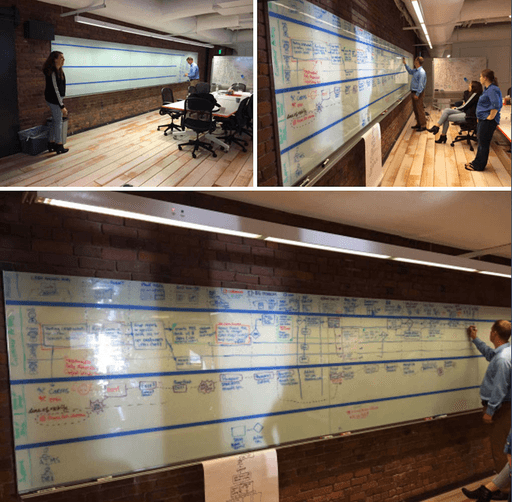
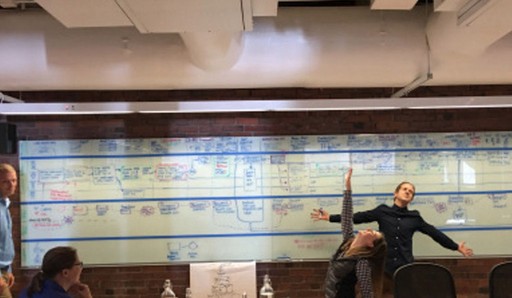
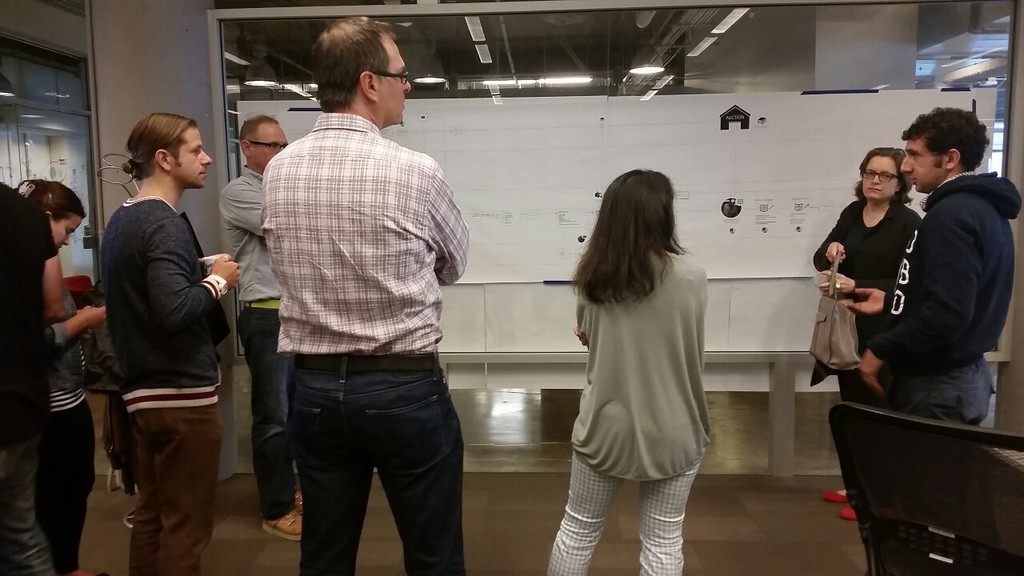
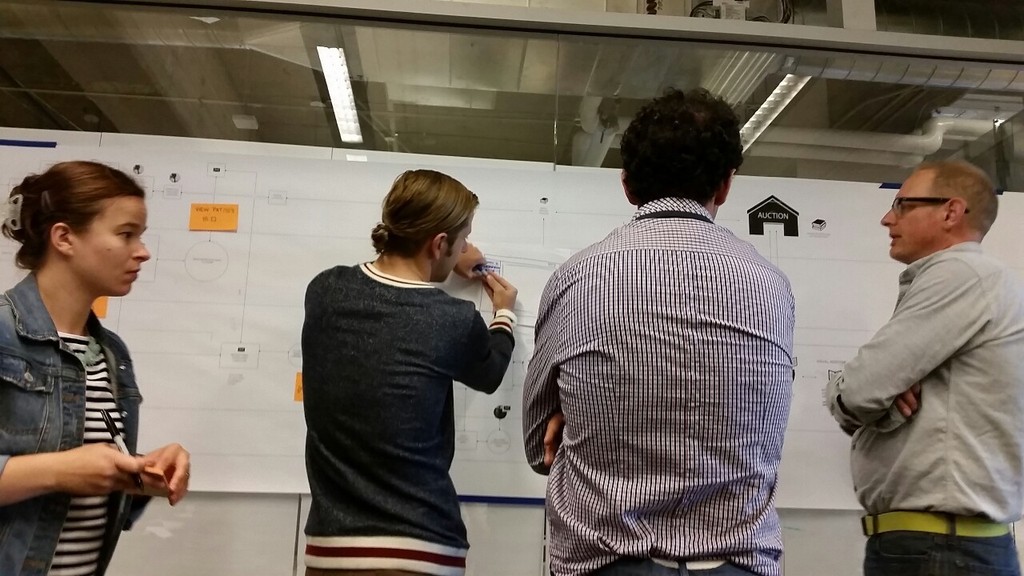

GETTING STARTED
Breakout your features into scenarios
You can list the scenario "titles" for each feature set. Then choose the scenarios that you want to dive deeper into and model them. In most cases, model the "happy path" from end-to-end. Then you select other scenarios to model after the happy path is defined and even model the un-happy (error) paths as well. Scenarios are features, just written in story format. Happy path is the most common journey that your user is going to take when using the application without any errors (just assume everything works).
Scenario approach to design
This approach makes it much easier to manage and design the workflows effectively. By focusing on individual scenarios, you'll be able to understand and process complexity way easier than trying to figure how the entire application works all at once in one sitting. This also make designing more effective and allows you to work through problems and complexities without designing screen by screen.
Think about it like slice bread
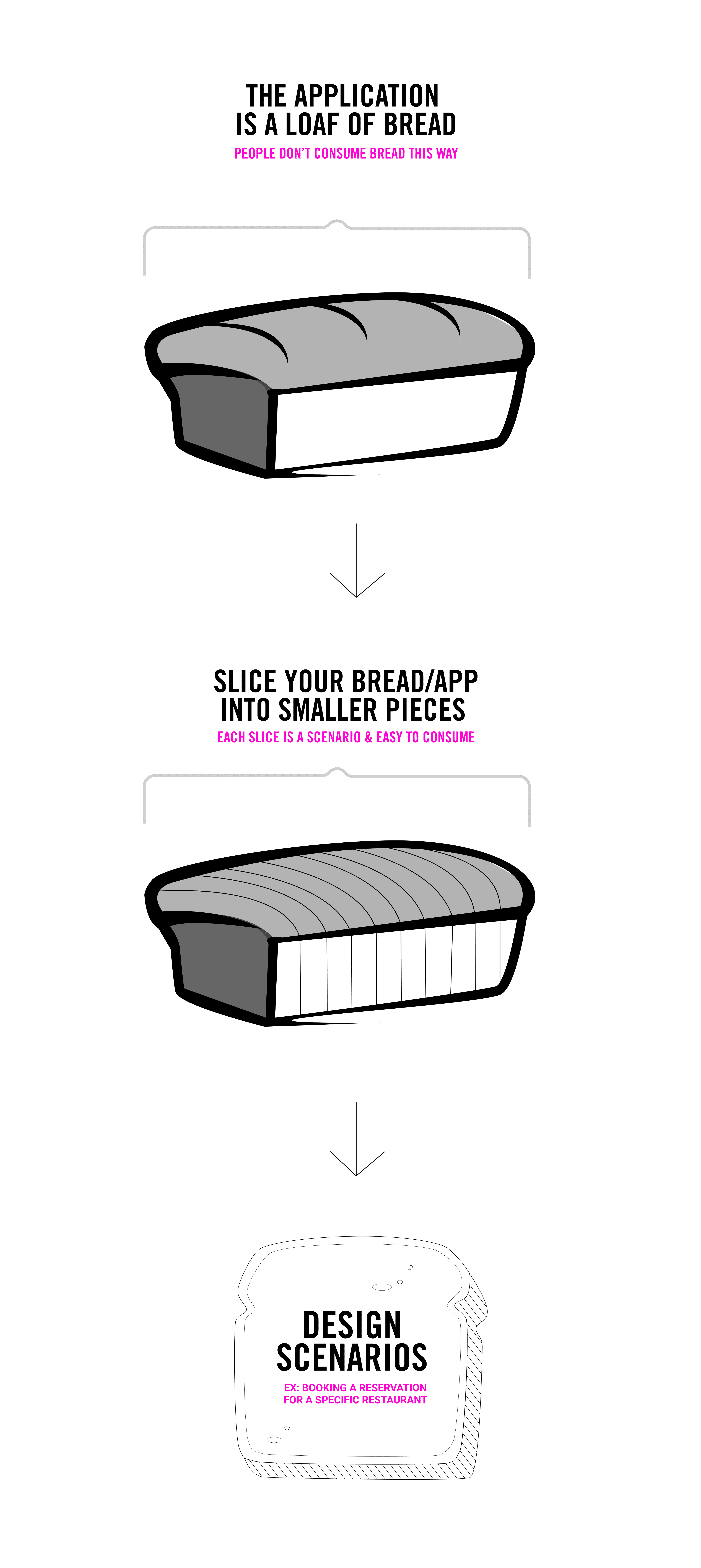
The Template
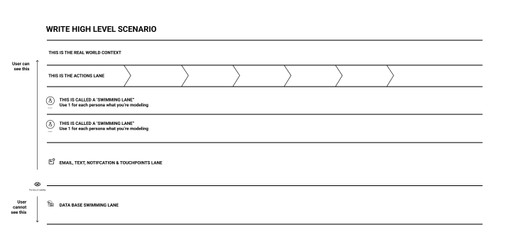
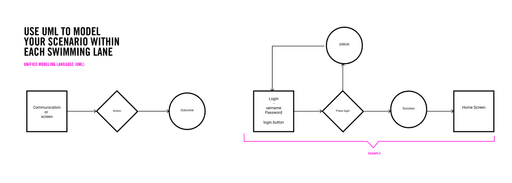
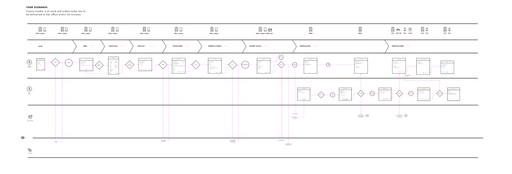
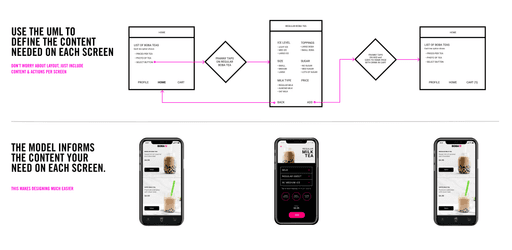
Download Template